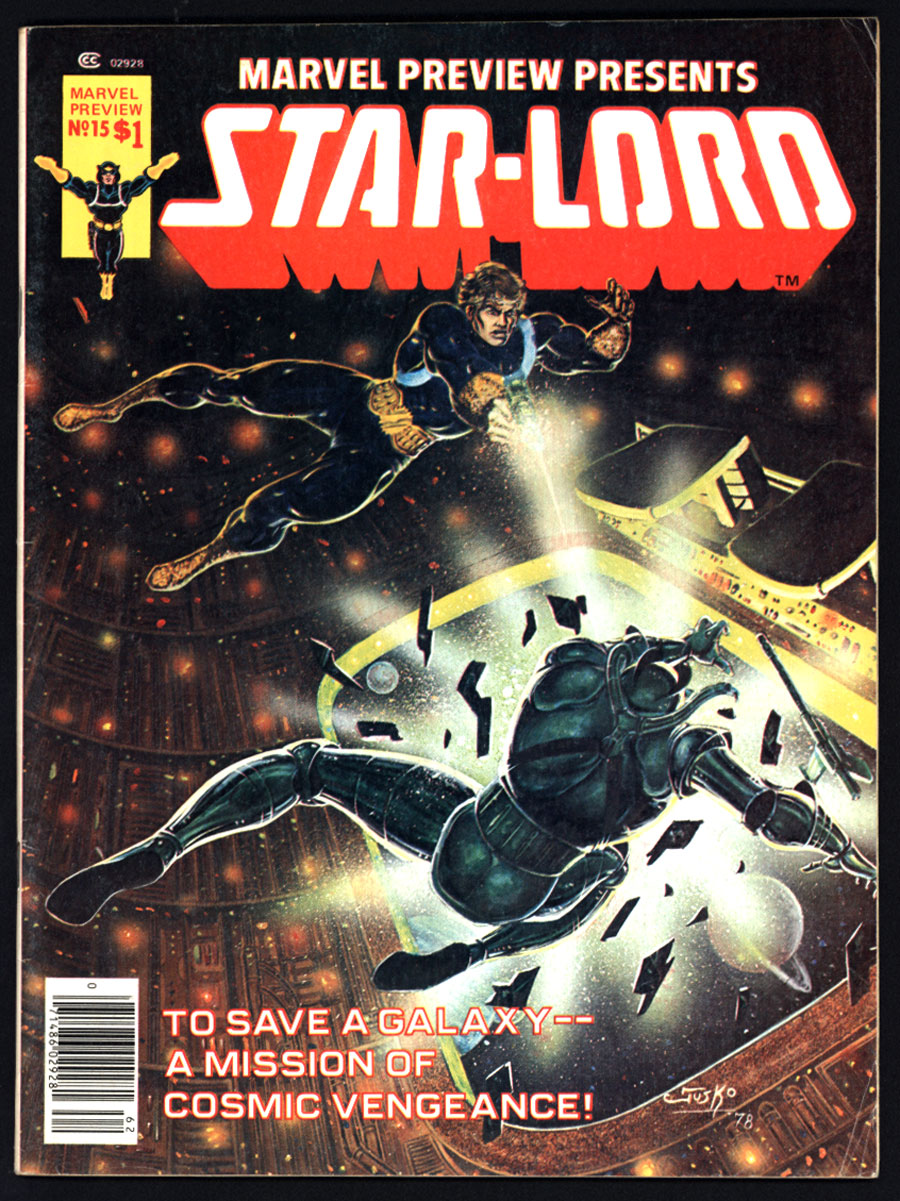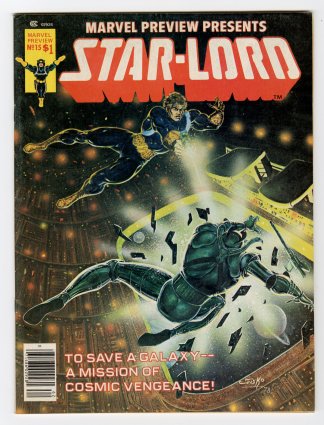MARVEL PREVIEW (1975-80) #15
F/VF: 7.0

(Stock Image)

YES
Accepting Offers
--
Offers
PUBLISHER: Marvel
COMMENTS: ow/white pgs
Star-Lord (Summer 1978); COMIC BOOK IMPACT rating of 6 (CBI)
Read Description ▼
Star-Lord (Summer 1978); COMIC BOOK IMPACT rating of 6 (CBI)
DESCRIPTION
ow/white pgs
Star-Lord (Summer 1978); COMIC BOOK IMPACT rating of 6 (CBI)
Artists Information
High School of Art & Design alum Carmine Infantino got his start in the industry working Timely, a precursor to Marvel Comics, where he would do spot work on anthology features, in his first work at DC he helped create Black Canary and began his long-running involvement with the Flash during his Golden Age era, as well as illustrating the original Green Lantern. After the post-war comic book slump Infantino collaborated with writer Robert Kanigher and editor Julius Schwartz to help bring back superheroes and launch the Silver Age by updating the Flash in the pages of Showcase, the reboot was a huge success and led to the superhero rebirth that has continued into the modern day, Infantino's ability to capture speed and movement on a page made his Flash believable and engaging. Carmine was promoted to Art Director and then Publisher at DC over the course of his illustrious career,
Inker at Marvel and DC, Wiacek worked with John Byrne, Carmine Infantino, John Romita Jr., and Todd McFarlane.
George Roussos also known under the pseudonym George Bell, was an American comic book artist best known as one of Jack Kirby's Silver Age inkers, including on landmark early issues of Marvel Comics' Fantastic Four. Over five decades, he created artwork for numerous publishers, including EC Comics, and he was a staff colorist for Marvel Comics.
Lee Elias was a British-American comics artist. He was best known for his work on the Black Cat comic book published by Harvey Comics in the 1940s. Lee Elias left comic books after the 1954 publication of Fredric Wertham's anti-comics book Seduction of the Innocent, which used four of his Black Cat panels as examples of "depraved" comic art. In 1972, Elias came back to American comic books, working mainly on DC's various horror titles and secondary Marvel Comics titles including Power Man and The Human Fly. His last major project was The Rook series for Warren Publishing.
Star-Lord (Summer 1978); COMIC BOOK IMPACT rating of 6 (CBI)
Artists Information
High School of Art & Design alum Carmine Infantino got his start in the industry working Timely, a precursor to Marvel Comics, where he would do spot work on anthology features, in his first work at DC he helped create Black Canary and began his long-running involvement with the Flash during his Golden Age era, as well as illustrating the original Green Lantern. After the post-war comic book slump Infantino collaborated with writer Robert Kanigher and editor Julius Schwartz to help bring back superheroes and launch the Silver Age by updating the Flash in the pages of Showcase, the reboot was a huge success and led to the superhero rebirth that has continued into the modern day, Infantino's ability to capture speed and movement on a page made his Flash believable and engaging. Carmine was promoted to Art Director and then Publisher at DC over the course of his illustrious career,
Inker at Marvel and DC, Wiacek worked with John Byrne, Carmine Infantino, John Romita Jr., and Todd McFarlane.
George Roussos also known under the pseudonym George Bell, was an American comic book artist best known as one of Jack Kirby's Silver Age inkers, including on landmark early issues of Marvel Comics' Fantastic Four. Over five decades, he created artwork for numerous publishers, including EC Comics, and he was a staff colorist for Marvel Comics.
Lee Elias was a British-American comics artist. He was best known for his work on the Black Cat comic book published by Harvey Comics in the 1940s. Lee Elias left comic books after the 1954 publication of Fredric Wertham's anti-comics book Seduction of the Innocent, which used four of his Black Cat panels as examples of "depraved" comic art. In 1972, Elias came back to American comic books, working mainly on DC's various horror titles and secondary Marvel Comics titles including Power Man and The Human Fly. His last major project was The Rook series for Warren Publishing.


MARVEL PREVIEW (1975-80) #15
Marvel CGC NM: 9.4
Off-White to White pgs; Census Rank 3 Highest Graded; Universal holder; Unrestored; CGC#0341360006
Star-Lord (Summer 1978); COMIC BOOK IMPACT rating of 6 (CBI)
Star-Lord (Summer 1978); COMIC BOOK IMPACT rating of 6 (CBI)
Off-White to White pgs; Census Rank 3 Highest Graded; Universal holder; Unrestored; CGC#0341360006
Star-Lord (Summer 1978); COMIC BOOK IMPACT rating of 6 (CBI)
Star-Lord (Summer 1978); COMIC BOOK IMPACT rating of 6 (CBI)
Highest Offer: $125


MARVEL PREVIEW (1975-80) #15
Marvel CGC NM-: 9.2
Off-White to White pgs; Universal holder; Unrestored; CGC#0502497007
Star-Lord (Summer 1978); COMIC BOOK IMPACT rating of 6 (CBI)
Star-Lord (Summer 1978); COMIC BOOK IMPACT rating of 6 (CBI)
Off-White to White pgs; Universal holder; Unrestored; CGC#0502497007
Star-Lord (Summer 1978); COMIC BOOK IMPACT rating of 6 (CBI)
Star-Lord (Summer 1978); COMIC BOOK IMPACT rating of 6 (CBI)


MARVEL PREVIEW (1975-80) #15
Marvel NM: 9.4
Star-Lord (Summer 1978); COMIC BOOK IMPACT rating of 6 (CBI)
Star-Lord (Summer 1978); COMIC BOOK IMPACT rating of 6 (CBI)


MARVEL PREVIEW (1975-80) #15
Marvel NM: 9.4
Star-Lord (Summer 1978); COMIC BOOK IMPACT rating of 6 (CBI)
Star-Lord (Summer 1978); COMIC BOOK IMPACT rating of 6 (CBI)






Star-Lord (Summer 1978); COMIC BOOK IMPACT rating of 6 (CBI)
Star-Lord (Summer 1978); COMIC BOOK IMPACT rating of 6 (CBI)